Key note 1: Wideband (and Massive) MIMO for Millimeter-Wave Mobile Networks: Recent Results on Theory, Architectures, and Prototypes
Abstract: Millimeter-wave (mmW) technology is emerging as a key component of 5G for meeting the Gigabit rate and millisecond latency requirements. Wideband high-gain multi-beamforming and data multiplexing is a key operational functionality, especially at access points, to enable mobile access and connectivity. However, harnessing it in practice poses significant challenges; in particular, the hardware and computational complexity of the high-dimensional spatio-temporal analog-digital interface. I will overview recent results in the design and analysis of wideband multi-beam MIMO APs for optimizing performance-complexity tradeoffs in mobile mmW networks, including: wideband multi-beam forming architectures; channel discovery, estimation and tracking; and the “beam-squint” problem. I will update on the development of a state-of-the-art mmW MIMO testbed that uses a lens array for multi-beamforming. I will also share key findings from the kickoff workshop of the NSF mmW research coordination network.
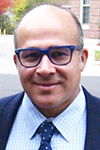
Biography: Akbar M. Sayeed is a Professor of Electrical and Computer Engineering at the University of Wisconsin-Madison, and leads the Wireless Communications and Sensing Laboratory. He received the B.S. degree from the University of Wisconsin, the M.S. and Ph.D. degrees from the University of Illinois, and was a postdoctoral fellow at Rice University. He is a Fellow of the IEEE, and has served the IEEE in a number of capacities, including as a member of Technical Committees, Guest Editor for special issues, Associate Editor, and as Technical Program Co-chair for workshops and conferences. His research interests include wireless communications, channel modeling, statistical signal processing, communication and information theory, time-frequency analysis, machine learning, and applications. A current research focus is the development of basic theory and system architectures for emerging 5G wireless technologies, including millimeter-wave and high-dimensional MIMO systems. He also leads the new NSF Research Coordination Network on Millimeter-Wave Wireless.
Key note 2: MmWave communication using out-of-band information
Abstract: Configuring the antenna arrays is the main source of overhead in mmWave communication systems, especially in systems with high mobility. In this presentation, we propose the concept of out-of-band aided mmWave communication. We analyze different strategies to leverage information derived from sensors or from other communication systems operating at sub-6GHz bands to help configure the mmWave communication link. We characterize potential reductions in overhead and highlight key challenges for future work.
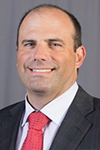
Biography: Robert W. Heath Jr. received the Ph.D. in EE from Stanford University. He is a Cullen Trust for Higher Education Endowed Professor in the Department of Electrical and Computer Engineering at The University of Texas at Austin and a Member of the Wireless Networking and Communications Group. He is also the President and CEO of MIMO Wireless Inc and Chief Innovation Officer at Kuma Signals LLC. Prof. Heath is a recipient of the 2012 Signal Processing Magazine Best Paper award, a 2013 Signal Processing Society best paper award, the 2014 EURASIP Journal on Advances in Signal Processing best paper award, and the 2014 Journal of Communications and Networks best paper award, the 2016 IEEE Communications Society Fred W. Ellersick Prize, and the 2016 IEEE Communications Society and Information Theory Society Joint Paper Award. He is a co-author of the book “Millimeter Wave Wireless Communications” published by Prentice Hall in 2014 and author of Digital Wireless Communication: Physical Layer Exploration Lab Using the NI USRP, National Technology and Science Press., 2012. He is a licensed Amateur Radio Operator, a registered Professional Engineer in Texas, and is a Fellow of the IEEE.
Panel session – Prevalent challenges for the adaptation of mm-wave technology for 5G
Panelists:
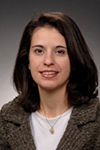
NADA GOLMIE (nada@nist.gov) received her Ph.D. in computer science from the University of Maryland at College Park. Since 1993, she has been a research engineer at the National Institute of Standards and Technology. She is currently the chief of the wireless networks division in the Communications Technology Laboratory. Her research in media access control and protocols for wireless networks led to over 100 technical papers presented at professional conferences, journals, and contributed to international standard organizations and industry led consortia. She is the author of “Coexistence in Wireless Networks: Challenges and System-level Solutions in the Unlicensed Bands," published by Cambridge University Press (2006). She leads several projects related to the modeling and evaluation of future generation wireless systems and protocols and serves as a co-chair for the 5G mmWave Channel Model Alliance.
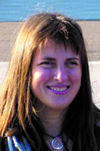
NURIA GONZÁLEZ-PRELCIC is Associate Professor in the Signal Theory and Communications Department, University of Vigo, Spain. She has co-authored more than 20 journal and conference papers in the last two years in the topic of signal processing for MIMO communication, especially mmWave communication. She has also co-authored a tutorial IEEE Journal of Selected Topics in Signal Processing on mmWave MIMO and was also a guest editor for the same special issue. She is associate editor for the IEEE Transactions on Wireless Communications. She has co-organized with Prof. Robert Heath two special sessions on mmWave communications at SPAWC 2015 and Asilomar 2016, and delivered a tutorial on SP for mmWave MIMO at GLOBECOM 2016. She is currently organizing a summer school on signal processing for 5G sponsored by the IEEE SP society (www.sp-for-5g.com) and will deliver a tutorial on sparse signal processing and MIMO during ICASSP 2017.

GIA KHANH TRAN received the D.E. degrees in electrical and electronic engineering from Tokyo Institute of Technology, Japan, in 2010. Currently, he is working as an Assistant Professor at the same university. His research interests are baseband signal processing (MIMO/MU-MIMO etc.), localization, and recently mm-wave communications. He had been working on several domestic/ international R&D projects centered on mm-wave communications, including the FP7 EU-JP joint project MiWEBA (2013 - 2016) and 5G-MiEdge (2016-2018).
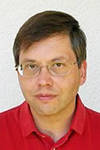
Prof. DAVID MICHELSON is leader of the UBC Radio Science Lab and co-director of the AURORA Connected Vehicle Technology Test Bed. He is a member of the Steering Committee of the 5G mm-Wave Channel Model Alliance and leads the Working Group on Emerging Scenarios. He is a member of the Board of Governors of the IEEE Communications Society, Board of Governors of the IEEE Vehicular Technology Society, Chair of the IEEE VT-S Technical Committee on Propagation and Channel Modelling and Member of the IEEE Antennas and Propagation Standards Committee. He served as General Co-Chair of the 2015 IEEE AP-S Symposium on Antennas and Propagation and URSI CNC/USNC Joint Meeting and the 2016 IEEE Globecom Workshop on mm-Wave Channel Modeling..
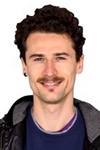
Dr. MARCO MEZZAVILLA (mezzavilla@nyu.edu) is a post-doc at NYU Tandon School of Engineering, where he leads various mmWave-related research projects, mainly focusing on 5G PHY/MAC design. He received the B.Sc. (2007) and the M.Sc. (2010) in Telecommunications Engineering from the University of Padova (Italy), and the Ph.D. (2013) in Information Engineering from the same university. He held visiting research positions at the NEC Network Laboratories in Heidelberg (Germany, 2009), at the Telematics Department at Polytechnic University of Catalonia (UPC) in Barcelona (Spain, 2010) and at Qualcomm Research in San Diego (USA, 2012). He has authored and co-authored multiple papers in conferences, journals and some patent applications. He is serving as reviewer for many IEEE and ACM conferences, journals and magazines. His research interests include design and validation of communication protocols and applications to Fourth-generation (4G) broadband wireless technologies, millimeter wave communications for 5G networks, multimedia traffic optimization, radio resource management, spectrum sharing, convex optimization, cognitive networks and experimental analysis.